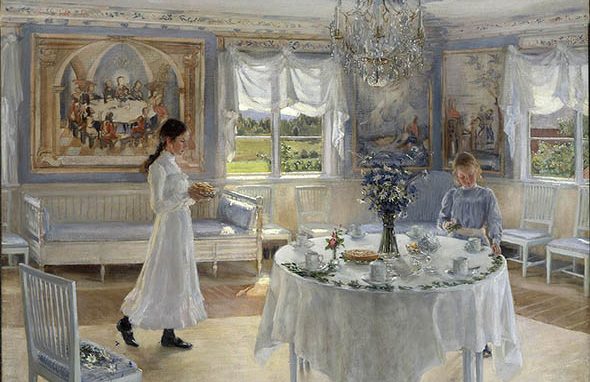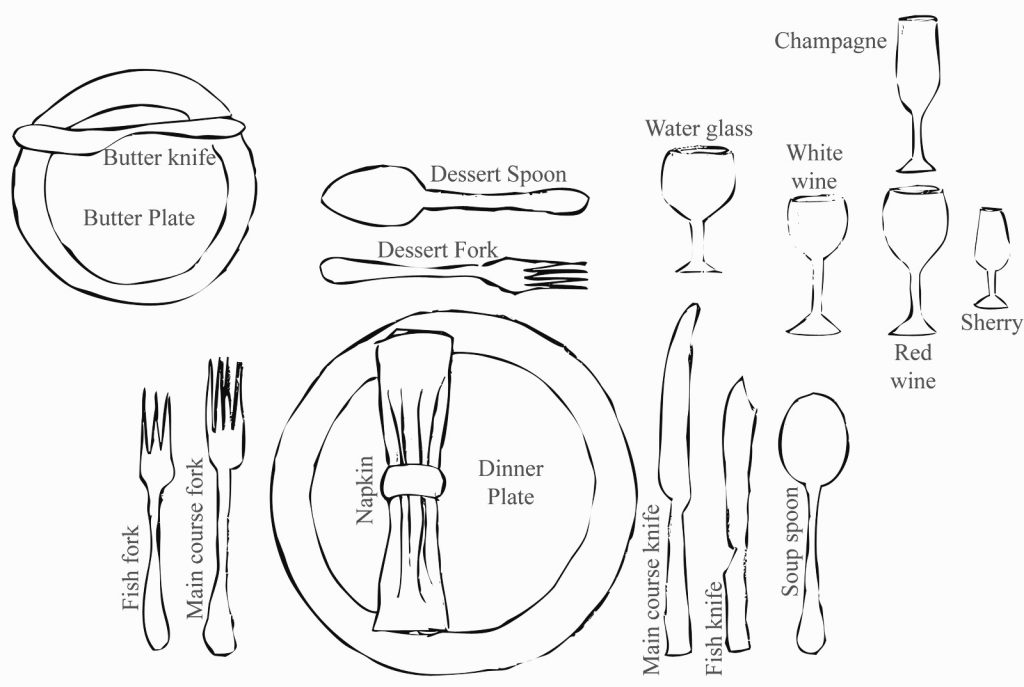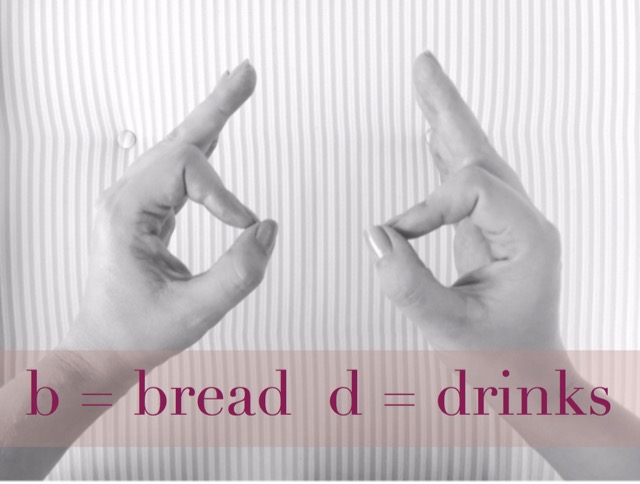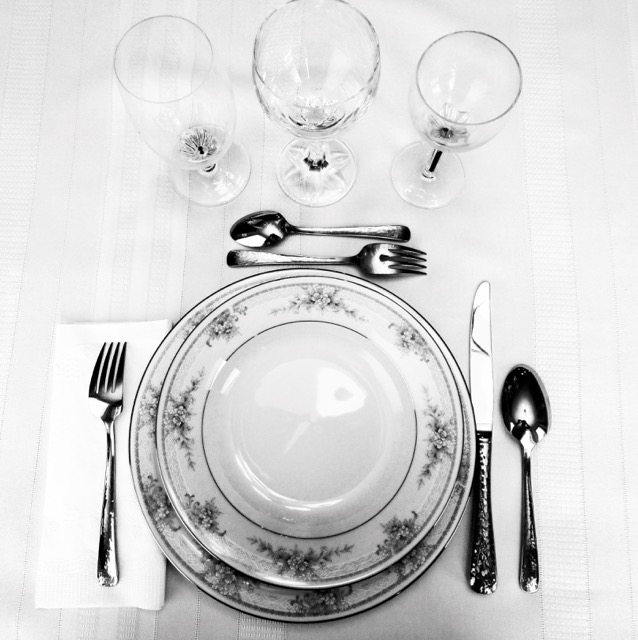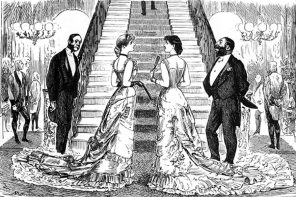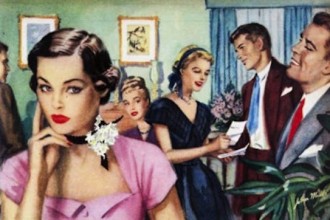Table settings should be simple right? Most likely you’ve sat at plenty of properly laid out tables, but unless you’re a complete etiquette dork like me you’ve probably not inspected the details of where and how things were precisely placed.
Although you shouldn’t fret too much about setting a proper table it can cause stress when it comes to hosting your own event or attending a formal dinner. There can be numerous variations depending on country, culture, or formality of the occasion.
To make it easy, in this lesson we’ll discuss a basic table setting and briefly review the minor differences between the English, French, and American styles.
The Basic Table Setting
The general setting should look something like the above diagram.
Regardless of which style you’re setting there are typically a few universal rules you can follow to make things easier.
- Forks always go the left of the plate, knives and spoons to the right, with the exception of the dessert fork and spoon, which are placed horizontally at the top of the plate.
- Only set the tables with utensils and dishware you will use. If you’re not serving soup, no soup spoon. No red wine, no red wine glass.
- Set the silverware on the table in the order they will be used, working your way from the outside in. For example, the soup spoon will be to the right of the knife as soup is served first and the fish fork will be to the left of the main course fork if fish is served first.
- The knife’s blade should face inwards towards the plate.
- Napkin can be placed either on the center of the plate or to the left side of the forks for a more informal setting.
- If dealing with multiple glasses arrange them from right to left in order of their use, although water glass should always be in the far upper left. If there are more than 3 glasses the smaller ones may be placed up front. The maximum number you should have on the table is 5
- Bread plate goes to the left, drinks to the right. A trick to remember this is to touch the tips of your forefingers and thumb to make the shape of lower case “b” and “d”. B for bread, D for drinks.
Minor Variations
In general table settings are consistent throughout America and Europe, but there are some minor difference that are important to be aware of particularly if dealing with a more formal event.
Now let’s review the various differences you may come across…
- In America you won’t find the dessert cutlery on the table, they will bring it out when dessert is served.
- In France you may find that there will be a cheese knife in replacement or in addition to a dessert fork. The knife should be placed above the dessert spoon, blade facing down.
- In France the forks and spoons should be placed tines down, so their backs are facing away from the table. This is due to the tradition of the French monogramming their silverware on the back instead of the front as the English do.
- In France, the glasses, especially in a formal setting, will be found centered at the top of the plate instead of to the right. You will still place them in order of use form right to left, with water glass always going to the far left.
- In France, in some cases there will be no bread plate. Bread is simply placed directly on the table.
- In England the bread plate may be placed to the left of the forks instead of the upper left corner.
- In England you must always set a matching knife for each fork as in the British system you always eat with both knife and fork together.
- For formal occasions, colored or highly decorated linens and china is more acceptable in America than in Europe. In Europe it’s safer to opt for white or off-white linens and simplistic yet elegant china.
- For formal occasions, tablecloths should always be used regardless of country, with the exception of the English countryside where you may wish to show off a beautifully preserved wooden table.
- In America napkins may be more elaborately folded but in Europe they should be kept relatively simple.
HOMEWORK: For some practice try setting you’re own table at home. If you do it yourself you’re less likely to forget the correct arrangements.

